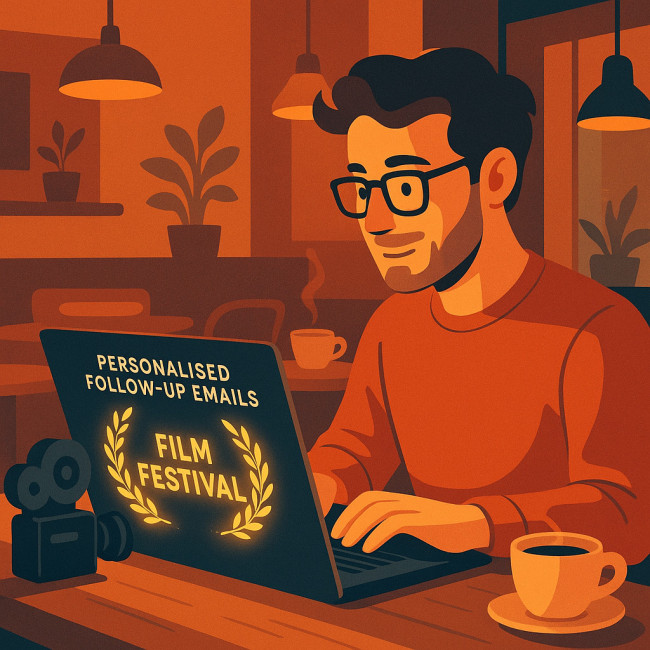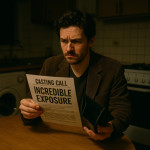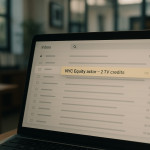Short film collaborations: use festivals to turn passion pieces into paid work
A well-crafted short film collaboration can transform from a zero-budget passion piece into a springboard for paid contracts—if you leverage film festivals strategically. This guide walks you through each stage: building the team, selecting the right festivals, maximising networking opportunities and converting buzz into sustainable income.
Why short film collaborations launch careers

Short films sit at the sweet spot between creative freedom and professional visibility. They cost less than features, yet the festival circuit treats them with similar prestige. By collaborating, you pool skills, split risk and present a portfolio-ready calling card to potential clients.
- Proof of concept: A polished eight-minute narrative shows agencies and brands that you can deliver.
- Network accelerator: Festivals gather directors, producers and casting agents you might otherwise cold-email for months.
- Revenue gateway: Awards and press pave the way for paid follow-ups—commercials, branded content, or TV pilots.
The festival ecosystem explained
Not all festivals are equal. Understanding tiers helps you budget time and submission fees wisely.
| Festival Tier | Typical Audience Size | Submission Fee Range | Main Benefit |
|---|---|---|---|
| A-List (e.g., Cannes, Sundance) | 10 000+ | $60–$120 | Global press & sales agents |
| Mid-Majors (e.g., Raindance, SXSW) | 3 000–8 000 | $40–$90 | Tech brands & indie distributors |
| Regional Gems | 800–2 500 | $20–$50 | Local commissions & tax-credit leads |
| Niche Festivals (horror, LGBTQ+…) | 300–1 200 | $10–$40 | Highly targeted audiences |
Use the 2025 film-festival calendar to map deadlines six months before your shoot wraps.
Step-by-step: turn your passion project into a festival-ready collaboration
1. Align creative and business goals
Before you write a single scene, schedule a intentions meeting. Each collaborator states a personal objective—showreel material, cinematography award, or sound-design showcase. Agree on measurable success metrics such as “Secure three paid client meetings within one month of the premiere.” This clarity prevents scope creep.
2. Build a lean, motivated crew
Target multi-hyphenate talent—an editor who can colour-grade, a producer who handles sponsorship decks. Post on the Artfolio collaboration board and filter by proven festival experience. Keep the core crew under ten to streamline decision-making.
3. Craft a defendable micro-budget
Even a no-cash shoot involves costs—insurance, hard-drive backups, festival fees. Build a spreadsheet with three columns: Essentials, Nice-to-have, Deferred. Offer transparent equity splits or profit participation to crew members in lieu of high day rates.
4. Plan festival deliverables early
Most A-list festivals demand a DCP, dialogue list and high-res stills. Schedule post-production milestones backwards from your first submission deadline to avoid rush fees later.
5. Secure marketing collateral
Behind-the-scenes photos, 30-second teasers and director statements are non-negotiable. They fuel press kits and social snippets that attract festival programmers.
Maximise festival ROI: from screening to paid gigs
1. Collect quantifiable proof of impact
- Track audience turnout via festival app stats.
- Save juror feedback emails as testimonials.
- Export social-media engagement numbers 24, 48 and 72 hours post-screening.
These metrics impress brands looking for storytellers who can pull attention fast.
2. Network with intent
Random mingling rarely converts. Study the guest list, then schedule five micro-meetings—coffee queues count. Use tips from networking mixers for actors to turn a two-minute chat into a calendar invite.
3. Offer ready-made packages
Arrive armed with one-page proposals: “Three 15-second cut-downs for TikTok at €1 800” or “Mini-doc series for NGO donors at €8 000.” Decision-makers appreciate clear numbers.
4. Document everything
Record Q&A sessions, red-carpet interviews and sponsor shout-outs. These clips add social proof to your next agent outreach emails.
Digital follow-up: keep momentum after festivals end

A sold-out screening is just the starting pistol. Within 48 hours, email attendees a thank-you note with a private link to bonus content. Update your website and actor directory profile with laurels and press quotes. For crew roles like cinematography or editing, optimise local landing pages using advice from local SEO for videographers.
- Week 1: Publish a case study highlighting challenges and solutions.
- Week 2: Release festival photographs on LinkedIn, tagging partners and sponsors.
- Week 3: Pitch production companies, referencing the festival's average audience rating.
- Week 4: Launch crowdfunder or pre-sales for your next project while excitement is high.
Common pitfalls and how to avoid them
- Entering the wrong category: A six-minute doc in a narrative slot gets buried. Read rules twice.
- Ignoring deliverable specs: ProRes 422 HQ isn't the same as H.264. Triple-check.
- Over-networking: Spamming business cards without context dilutes your brand. Personalise.
- Post-festival silence: Thirty days of inactivity can kill momentum. Automate reminder emails.
FAQ
- How many festivals should I submit to?
- Start with 3–5 top-tier events that match your genre, then 6–10 regionals to widen exposure. Quality beats quantity.
- Can I still land paid work if my short doesn't win awards?
- Yes. Focus on audience turnout, press reviews and testimonial clips to demonstrate engagement.
- Do collaborators need formal contracts?
- Absolutely. Spell out revenue splits, festival travel costs and decision-making processes in writing.
- When should I approach potential clients?
- 48–72 hours after your premiere, while buzz is verifiable. Share attendance numbers and press quotes.
- What if my film is longer than 15 minutes?
- Target festivals with extended short categories or episodic showcases. Longer runtimes limit screening slots, so plan submissions accordingly.
Quick knowledge check
Action plan: secure your next paid gig
Turning a collaborative short into revenue is a repeatable process. Define shared goals, curate the right festival path, and nurture every contact with data-backed follow-ups. Start outlining your next project today—and let festivals become the launchpad for your paid career.
Ready to move? Gather your team, block submission deadlines in your calendar, and craft that irresistible one-pager for future clients. Your festival premiere is only the beginning.











